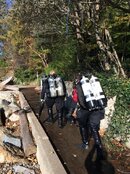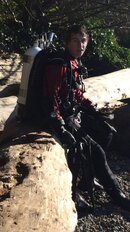Adobo
Contributor
ISOLATE, then reopen the valve you shut down, and try the other.
There's only so many options...
The process I was taught to debug post/manifold failures is for the diver to take his best crack at it and then to ask his buddy to double check his work. This process doesn't work if my buddy doesn't know what a various failures look like. Or if I don't bring a buddy along.
You have a process wherein you can figure out what the failure is without your buddy's help. Good. I am not that smart. I would follow my training and ask my buddy to come double check my work.
---------- Post added November 10th, 2014 at 05:39 PM ----------
solution there is you can flip the doubles over your head and fix them, or do proper gear checks to make sure your hoses are all tightened before the dive, and a first stage can't come loose unless it is depressurized and turned. Pretty easy concept, but if you hear bubbles, you'll be able to feel any big bubbles, so feel them and turn the dive.
Flip doubles over your head. Really?
The OP is asking about tips diving doubles for the first time. And we are in the weeds about failures and flipping tanks over our heads while we are under water.
Gotta love scubaboard.





